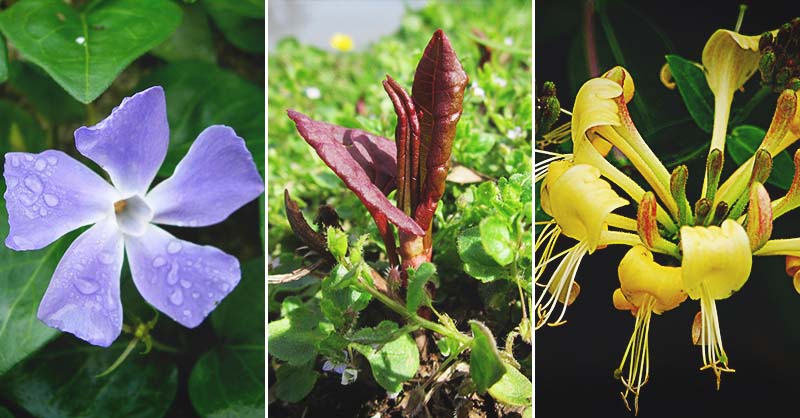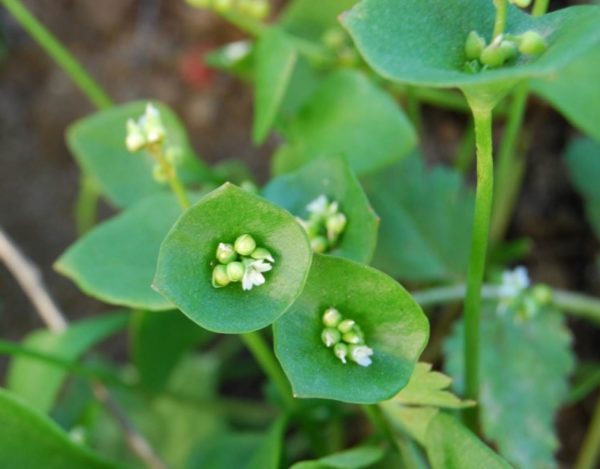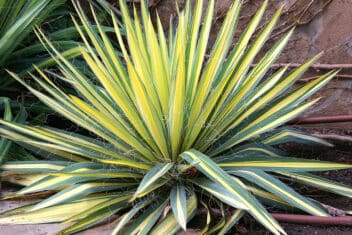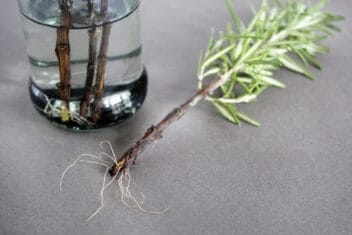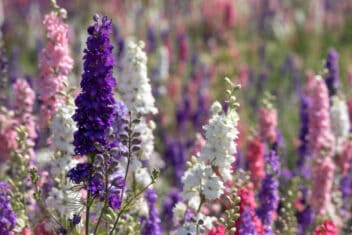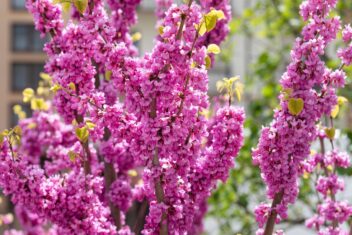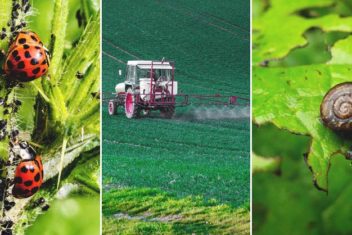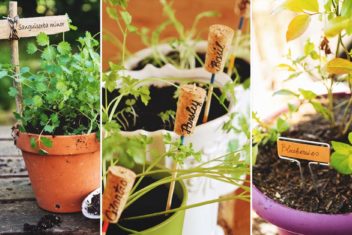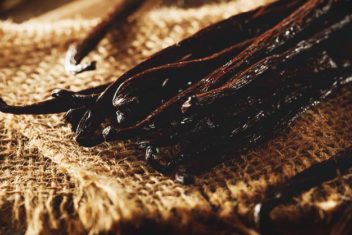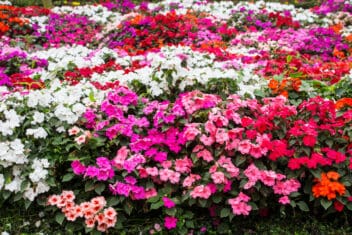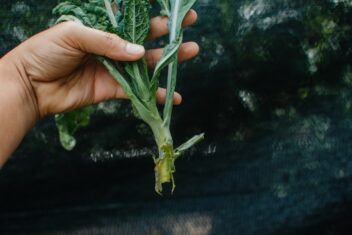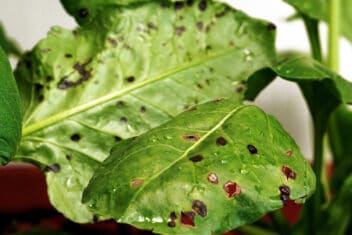We’ve all been there. You’re at the garden store, and an employee suggests the “perfect” plant to fill a space and feed your family. Little do you know that years down the road, those invasive plants could become a pest – if not a menace – to your garden and the environment.
Plants marketed as fast-growing, maintenance-free, or quick-spreading, might be garden attackers in disguise. You’d be surprised how many common plants are trouble masquerading as something beneficial. Next time you get ready to add a plant to your space, arm yourself with a little knowledge about invasive plants and aggressive plants that will do more harm than good.
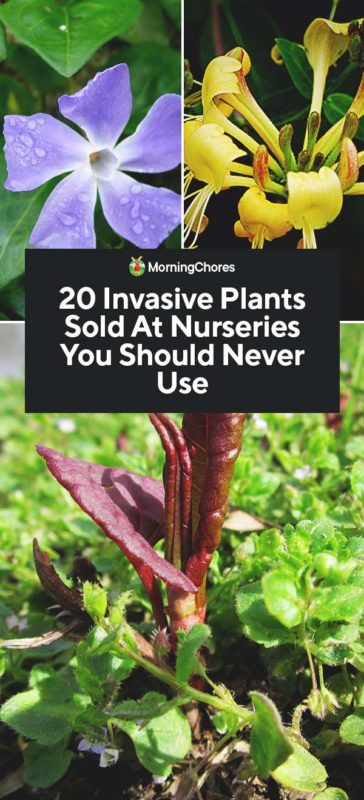
What are Aggressive and Invasive plants?
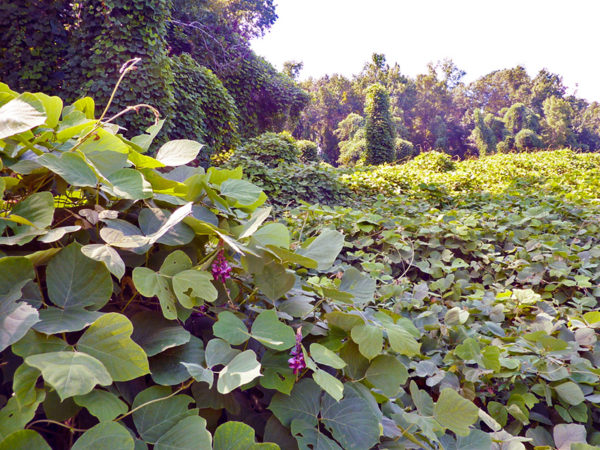
Invasive plants are those species that outcompete native varieties and rapidly grow out of control. They thrive against all the odds and are difficult to eradicate. While not technically invasive, aggressive growers multiply quickly but aren’t necessarily capable of overtaking your property and competing with native flora.
Both invasive species and aggressive species can cause problems in your garden. Your city or town may have a list of particularly invasive plants that you should avoid at all costs. It pays to be aware of sneaky invaders since there’s always a chance that tricky plants might be sold at your local garden center without you even knowing.
Of course, not all impressive growers and easy-to-maintain plants will cause you trouble. If in doubt, stick with native species and don’t ever be afraid to ask plenty of questions.
Below, our list of invasive plants and aggressive plants includes information on characteristics, growth habits, and other tidbits you need to know as a gardener. Knowledge is your first step in avoiding trouble down the line.
Vines
1. English Ivy

Europeans spread this invasive plant as they colonized around the world.
What it looks like: A trailing, climbing evergreen vine.
Why nurseries recommend it: For privacy, wall and ground cover. It’s low-maintenance, drought, and low-light tolerant). It’s also winter-hardy.
Problems: It quickly outpaces nearly everything in its path, crowding out other plants and making areas unfriendly for some wildlife. Ivy will cover even large plants, blocking light and eventually killing them. The plant is also toxic to humans and some animals and may cause allergic skin reactions. If you leave English ivy on buildings or other infrastructure, it can cause serious damage.
Verdict: Avoid planting at all costs, because there are plenty of other great vines out there that are much better for the environment.
2. Japanese Honeysuckle
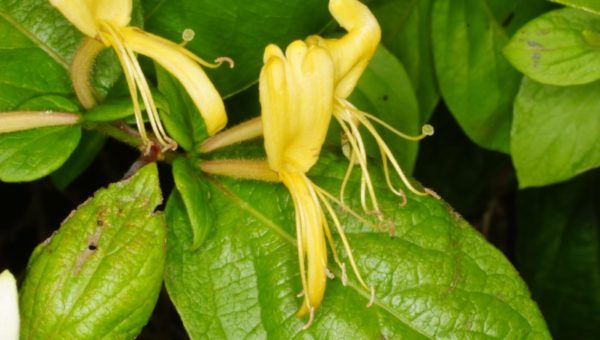
An invasive species originally from Japan.
What it looks like: A woody-stemmed vine that flowers pink, orange or yellow in late spring and early summer.
Why nurseries recommend it: It’s recommended as a reliable ornamental bloomer.
Problems: It can smother young trees and quickly grows to form dense cover overtop trees, blocking light to everything below.
Verdict: Avoid planting. If you have it on your property, keep a close eye on this species and prune ruthlessly.
3. Periwinkle
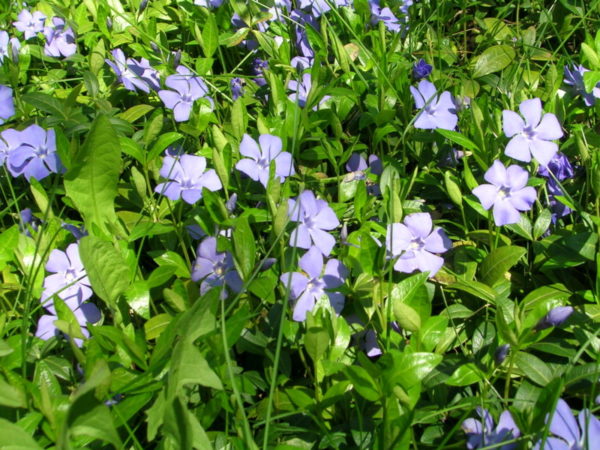
Introduced to North America and Australia as a fast-growing ornamental.
What it looks like: An evergreen vine with pretty purple flowers.
Why nurseries recommend it: Periwinkle is a rapid growing, low maintenance ground cover option.
Problems: Not only is this invasive species capable of quickly forming a dense ground cover that suppresses everything beneath it, but periwinkle also doesn’t need much to survive, and it spreads rapidly.
Verdict: Pick a different ground cover like glory vine.
4. Kudzu
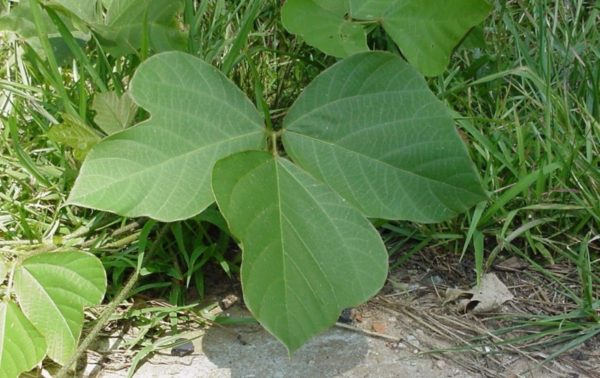
A Japanese plant introduced initially as an ornamental vine, kudzu is now considered an incredibly problematic weed.
What it looks like: A vine with purple flowers and showy leaves.
Why nurseries recommend it: For fast-growing shade and privacy, as a ground cover, or for its edible blossoms.
Problems: The king of invasive plants, kudzu spreads exceptionally quickly and chokes out other plants in its way. In addition, it is difficult to control and nearly impossible to eradicate.
Verdict: Stay away lest you want your garden or yard to disappear.
5. Chinese Wisteria
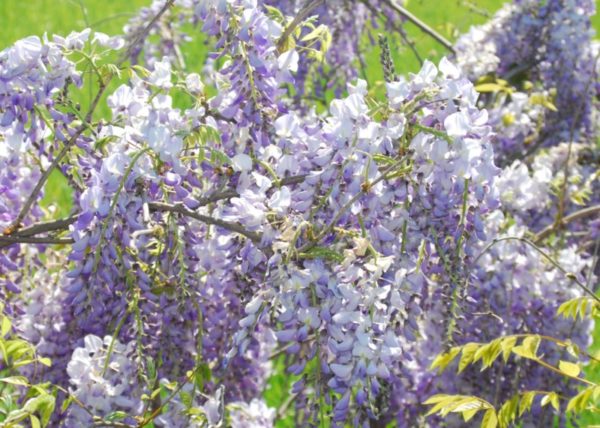
An invasive species that’s enticingly beautiful.
What it looks like: Gorgeous purple or pink flowering vines.
Why nurseries recommend it: As an ornamental because – we have to admit- it’s stunning.
Problems: Wisterias spread rapidly and outcompete other species. Furthermore, it is especially problematic in forested areas and capable of killing young trees.
Verdict: If you’re in the U.S., plant American Wisteria instead.
Edible Plants
6. Mint
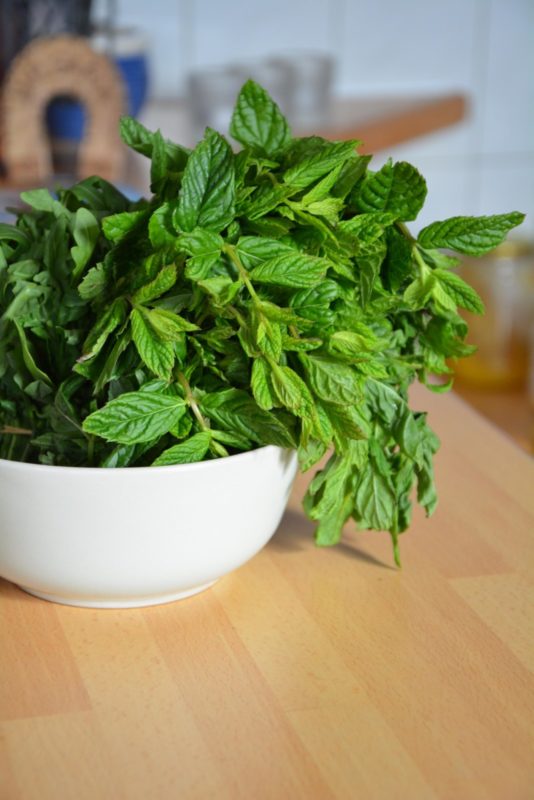
Grown for its fragrant smell and sharp, fresh taste, mint is a great garden plant so long as you treat it accordingly.
What it looks like: Depends on the variety. Trailing or compact growth habit, small edible leaves.
Why nurseries recommend it: Mint is a favorite garnish and ingredient for many dishes.
Problems: Mint is more of an aggressive species than an invasive plant. It spreads quickly. In a garden, it’s important to keep it separate from other plants as it can soon outpace and choke nearby residents.
Verdict: Grow it in a pot or separate container to keep it under control.
7. Garlic mustard
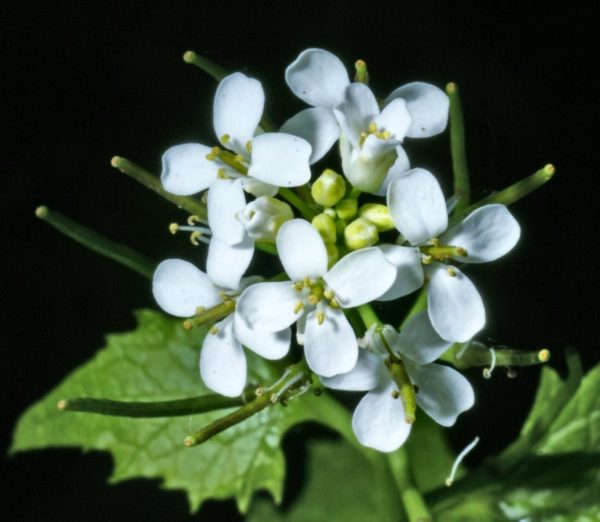
An aggressive species, this biennial edible smells more like horseradish than mustard.
What it looks like: Lilypad-shaped leaves and a long taproot.
Why nurseries recommend it: It’s edible and will survive in many conditions.
Problems: Garlic mustard seeds are prolific, can scatter a long distance, and survive a long time in the earth.
Verdict: Forage garlic mustard instead of planting it. It grows wild in many areas.
8. Japanese mugwort
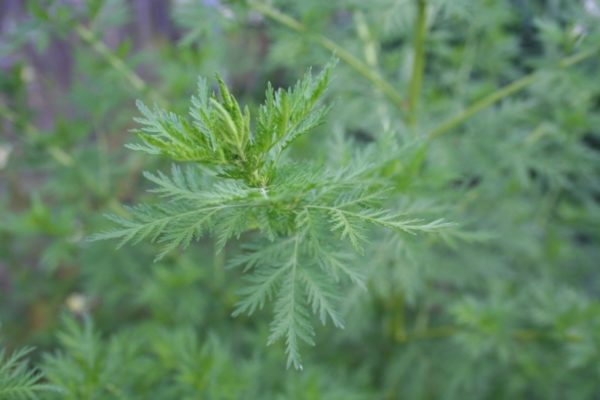
Mugwort is an invasive species with an ugly name originally from Europe or Asia. You likely won’t find this at your local nursery but may find seeds available from sellers that sell plant varieties used for medicinal purposes.
What it looks like: Green herb-like plant that resembles chrysanthemum
Why nurseries recommend it: It’s a perennial, so it returns year after year and it’s good for medicinal uses.
Problems: Spreads via rhizomes, which make the plant tough to eradicate, as well as causing allergies.
Verdict: Stay away. Choose other plants for your herbal remedies.
9. Wintercress
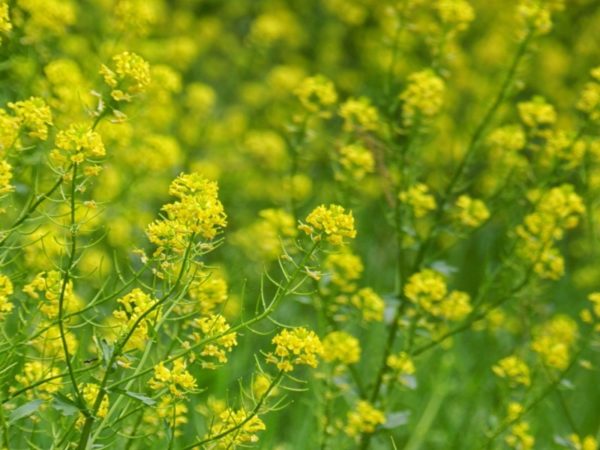
A cousin of watercress, wintercress is perennial that’s part of the mustard family. It is particularly invasive species in Japan.
What it looks like: Features long stems topped with dainty yellow flowers.
Why nurseries recommend it: Bee-friendly and not particularly demanding.
Problems: Considered a weed in many areas, pops up almost everywhere. It’s not too much trouble to get rid of, thankfully.
Verdict: It’s not the worst culprit on this list, but there are better varieties to grow if you’re looking for edible plants with pretty flowers.
10. Purslane
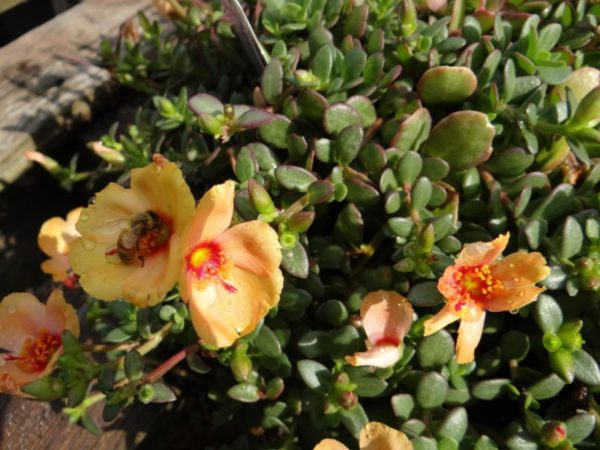
Probably originally from Southeast Asia, purslane in an edible succulent that grows nearly anywhere without much trouble.
What it looks like: Succulent with chunky, rounded leaves
Why nurseries recommend it: It’s super easy to grow, and it’s a yummy addition to salads or sandwiches.
Problems: This aggressive species multiplies rapidly in any conditions and can quickly spread if left unchecked, choking out other garden crops.
Verdict: Grow it in a pot and enjoy this prolific edible in all types of dishes.
11. Claytonia
Also called miner’s lettuce, this easy-growing green is high in vitamin C.
What it looks like: Green leaf clusters that grow in patches.
Why nurseries recommend it: A low-maintenance salad green that’s cold hardy.
Problems: Crops up in patches. Considered a weed. Unless, of course, you plan on eating it.
Verdict: Enjoy it in your next salad. It does self-sow quite readily, though, so beware.
Trees
12. Norway maple
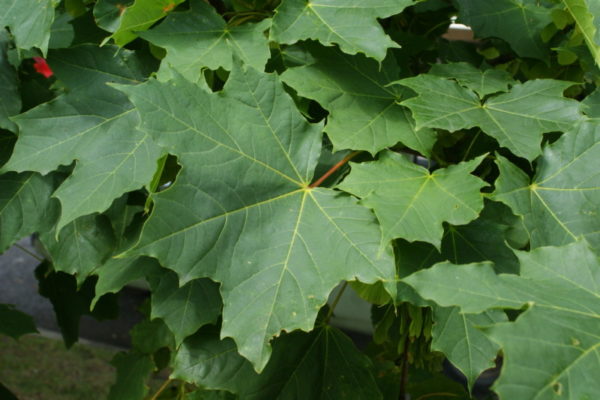
A European maple species prized for its aesthetically pleasing growth habit.
What it looks like: Like other maple trees.
Why nurseries recommend it: It’s an attractive tree that grows quickly and handles stress quite well.
Problems: The quick-growing maple outpaces other forest flora and reduces other plant’s access to light.
Verdict: Pick a different maple species for your yard, preferably one that grows native in your area.
13. Sycamore maple
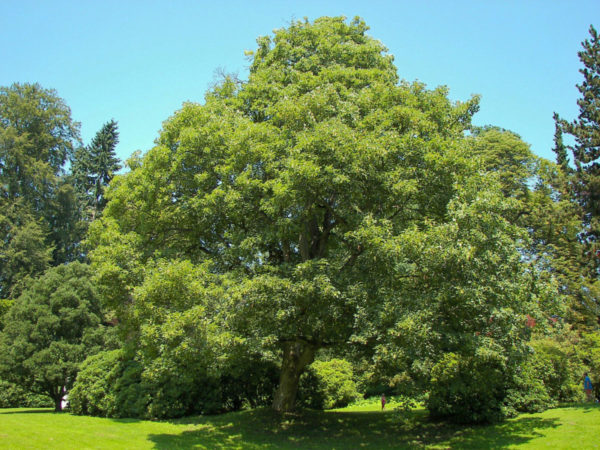
An aggressive maple species native to Europe and Asia.
What it looks like: Looks similar to other maple tree and can grow up to 60 feet tall.
Why nurseries recommend it: It’s a handsome looking maple variety.
Problems: Produces an impressive amount of seeds that can quickly cover the ground and suffocate other plants.
Verdict: Pick a different type of maple to plant, preferably one that grows native in your neck of the woods.
14. White poplar
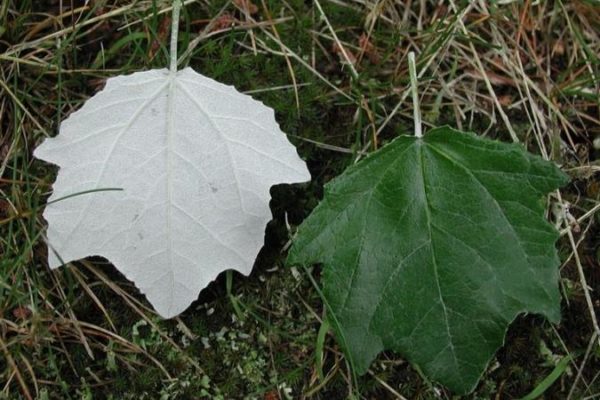
via: Vermont Invasives
Brought to North America in the 1700s as an ornamental variety.
What it looks like: A large tree with pretty leaves that feature white undersides.
Why nurseries recommend it: As an ornamental thanks to its brilliant and attractive leaf display.
Problems: This aggressive plant outcompetes other trees.
Verdict: Avoid. Choose a different poplar variety.
15. Princess tree
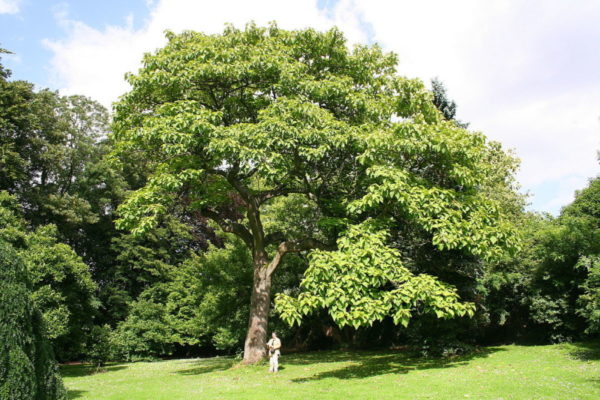
This tree is also known as the empress tree or royal paulownia. Native to China, it was brought to the United States in the 1840s.
What it looks like: When flowering, the tree displays beautiful pinkish purple blooms.
Why nurseries recommend it: It’s a fast-growing ornamental for the yard.
Problems: This invasive species outgrows other plants and trees incredibly quickly and overshadows native species, to say nothing of the seeds that germinate readily and travel far distances.
Verdict: Skip this tree and choose another ornamental variety. Preferably a native species.
Shrubs etc.
16. Japanese barberry
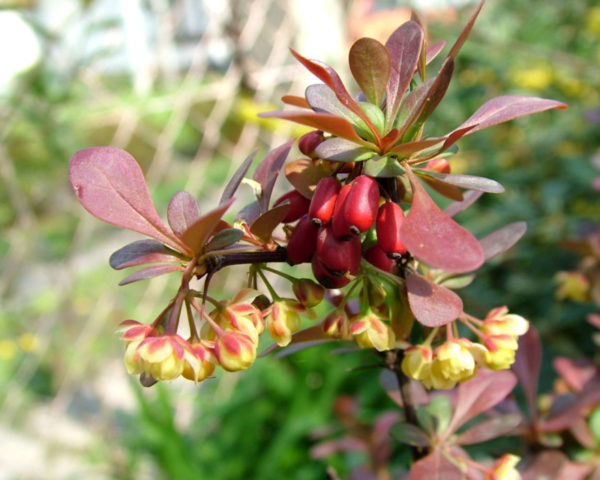
This plant is native to, you guessed it, Japan. It was introduced in North America as an ornamental in the late 1800s.
What it looks like: A thorny shrub with red berries and leaves.
Why nurseries recommend it: This aggressive plant tolerates shade and drought. It requires little maintenance and pests don’t love it.
Problems: Japanese barberry is a favorite habitat for Lyme disease-carrying ticks. It also competes with native species.
Verdict: There are plenty of attractive shrubs other than this one you can plant.
17. Common Mullein
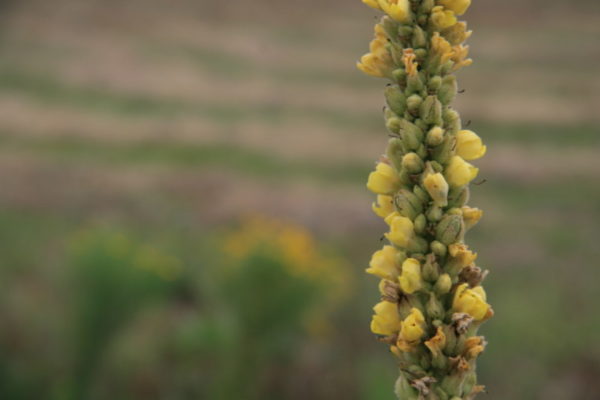
This biennial is native to Europe, Asia, and Africa.
What it looks like: Young plants are small tightly packed rosettes and when the plant bolts the shoot produces yellow flowers.
Why nurseries recommend it: As a hardy medicinal plant useful for treating respiratory illnesses.
Problems: More of an annoying weed than an invasive species, mullein spreads easily.
Verdict: Plant it if you like, but unless you’re willing to micromanage it you’ll find it popping up around your property. Some varieties are easier to control than others.
18. Purple Loosestrife

Introduced to North America in the 1800s, purple loosestrife thrives in wetlands.
What it looks like: Fuschia-colored flowers grow along the vertical stem.
Why nurseries recommend it: As a pretty addition to your flower garden.
Problems: Spreads quickly and is a hungry feeder limiting nutrients for native species. It also has a severe impact on the habitats of many species, particularly in wetlands.
Verdict: Stay away. Find another plant to adorn your flowerbed.
19. Bachelor’s Buttons
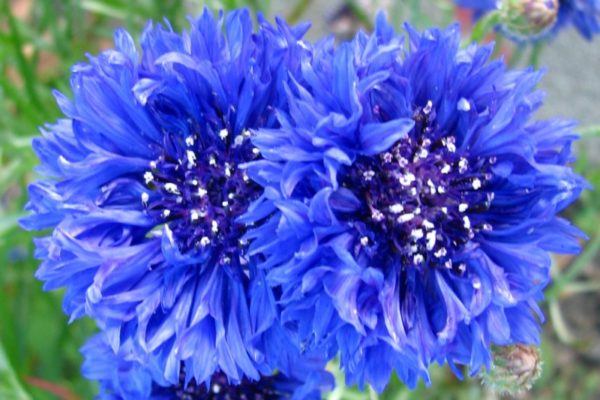
Also known as cornflower, these cute little flowers are native to Europe. I almost planted these until I was warned against doing so by a friend.
What it looks like: Vibrant colored flowers (blue, white, purple, or pink) atop a bunch of stems.
Why it might be suggested to you: You’re likely to find these little invaders in wildflower seed packets. They’re easy to grow and are edible, too.
Problems: In some southern states, the plant is so aggressive that it’s banned.
Verdict: Weight the pros and cons, do your research, and then make an educated decision before planting this cute-as-a-button flower.
20. Butterfly bush
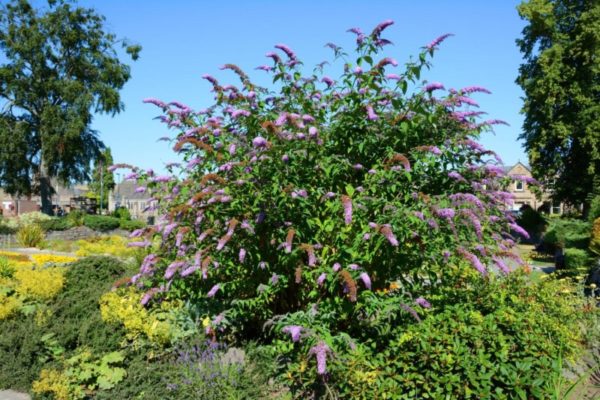
Named after a butterfly? What could go wrong? This shrub features beautiful blooms and emits a pleasant smell. But it’s not necessarily the number one choice for your garden.
What it looks like: It’s a shrub that can grow as tall as 16 feet and has pretty lilac-like blooms.
Why it might be suggested to you: As a low-maintenance, easy to grow ornamental that readily attracts butterflies.
Problems: Seeds easily and has an impact on soil nutrient composition. It also competes with native species.
Verdict: There are plenty of other butterfly-friendly perennials and plants you can grow in the garden.
The Bottom Line
Do your research. Before adding a plant to your garden or landscape, do a quick online search to find out about it. It’s also worth keeping in mind that whether a plant is invasive or not may depend on the area where it’s planted. Always do your homework before planting something new.
While aggressive plants won’t necessarily take over your entire yard and aren’t always considered invasive, they may be tougher to handle and care for, and there are usually better options out there.
A well-meaning garden nursery employee may suggest a quick-growing variety when you share that you want some privacy from your neighbors, but avoid headaches down the road by being skeptical.
Have you ever grown something invasive or have to deal with an aggressive plant? What was your experience? How long did it take you to get rid of it? Are there plants in your area that have become particularly problematic? Share with us in the comments!

